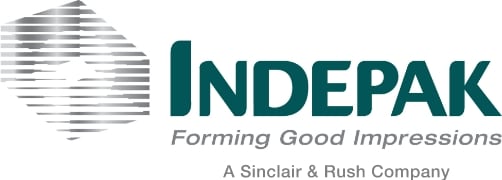At Indepak, we’ve been a leading supplier of medical packaging for more than 50 years and we can provide you with packaging for medical devices, medications, medical kits, pharmaceutical products, over-the-counter medications, first aid kits and much more. Let’s take a quick look at medical packaging in general and the types of packaging we can provide for our customers.
Thermoform plastic materials are ideal for most types of medical packaging for many reasons. Many types of plastic can be sterilized easily, which makes plastics a good choice for medical and surgical kits. The plastics we use for medical packaging also are moisture-resistant and chemical-resistant which protects medications and equipment.
Many plastics also are impact-resistant, and few of us probably even remember the days when glass was used to hold many medicines and even IV liquids, but these glass containers broke easily and were especially difficult to transport to field hospitals. Additionally, plastics are lightweight, and it costs much less to transport plastic packaging than packaging created using other materials.
Types of Medical Packaging
At Indepak, we produce rigid thermoform packaging for medical and pharmaceutical companies as well as for companies that produce personal care products. The types of packaging we can create include:
Blister Packaging – There are several common types of blister packs, including blisters with cavities for individual doses of medicine. This is usually just called unit dose packaging or single-dose packaging.
However, that is just one type of blister we can produce. If you sell medical products such as thermometers, blood pressure monitors, first aid supplies or even bottled over-the-counter medications, we can design blister packaging that protects your product and displays the item so that customers can see what they are purchasing.
There are many types of blister packs that we can consider, depending on your product or budget. For instance, for less expensive items, we might opt for a basic face seal blister, which is simply a custom plastic cavity that is heat-sealed to a paperboard backing.
Full-face seal blisters and full-card blisters can be a good option if you need a bit more packaging security, but if you need a higher level of protection for more expensive products, it can be smart to opt for a trap blister (a plastic cavity “trapped” between two pieces of cardboard) or a plastic clamshell, which is a type of blister that folds onto itself with a hinge at one end.
Clamshell packaging can be tightly sealed to prevent tampering and to lock out moisture and other contaminants. We can design clamshells for retail products as well as clinical packaging for medical or surgical products used in hospital and clinic settings.
Plastic Trays & Cups – Trays can be used to hold medical kits, medications and medical devices. We have been designing medical trays for decades and can create any custom design that you might need. We also can produce items such as dosage cups or containers with lids, depending on your needs.
If you produce medical devices, you often will need to choose between using a pouch or a tray. Pouches can be faster to produce and less expensive to produce than trays, but they don’t provide as much protection, and they aren’t as attractive, nor do they stack well on shelves as a tray would. While we don’t produce flexible packaging, such as medical pouches, we can let you know if this might be a better option. Our goal is to help clients find the best packaging options for their products, even if that means we recommend another supplier.
Unique Designs – Not everything we design is a blister, clamshell or plastic tray. We can create a completely custom design that meets your needs. This could include designing laboratory equipment to hold test tubes and vials or creating parts or an entire product using thermoform plastic materials.
Safety & Quality
When it comes to medical packaging, safety is crucial, and we go well beyond ISO 9001:14001 specifications. For our medical and pharmaceutical customers, we produce low-particulate packaging, intended for non-sterile or downstream sterilization applications.
Our detailed record-keeping ensures traceability down to the box level. We have processes from material ordering and receiving through production and packaging to ensure that your thermoform medical packaging meets agreed-upon specifications.
Material Selection
Our facility includes multiple lines of high-speed thermoforming equipment. This allows us to use a variety of materials and meet the needs of a diverse clientele. In addition to serving the medial and pharmaceutical industries, we also produce packaging for specialty foods companies, the electronics industry, the agricultural industry and for many types of retail products.
With medical packaging or pharmaceutical packaging, materials must be approved for use as medical packaging, but if sterilization is an issue, we must use materials that allow a sterilant to penetrate those materials.
Just let us know a bit about your sterilization process, and whether you use gamma sterilization, ethylene oxide, autoclave or electron beam sterilization methods as this will help us find the best materials for your custom packaging project. If your product will be sealed with a lidding film, we also can work with your lidding supplier to ensure material compatibility.
We work with a wide range of materials that often are used for pharmaceutical and medical packaging. This includes PETG, which is one of the most commonly used materials for medical packaging, as well as PVC, PP and HIPS.
If you need any type of rigid thermoform plastic medical packaging, contact the team at Indepak at any time. We’ve been producing quality medical packaging for more than 50 years and can find a total packaging solution that meets your needs and your budget. To get started, fill out our quick contact form or give us a call at (800) 526-6273.





